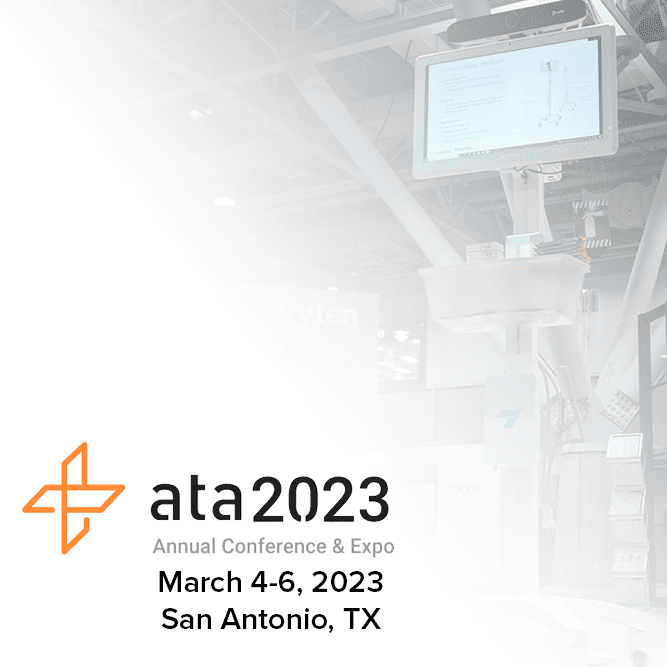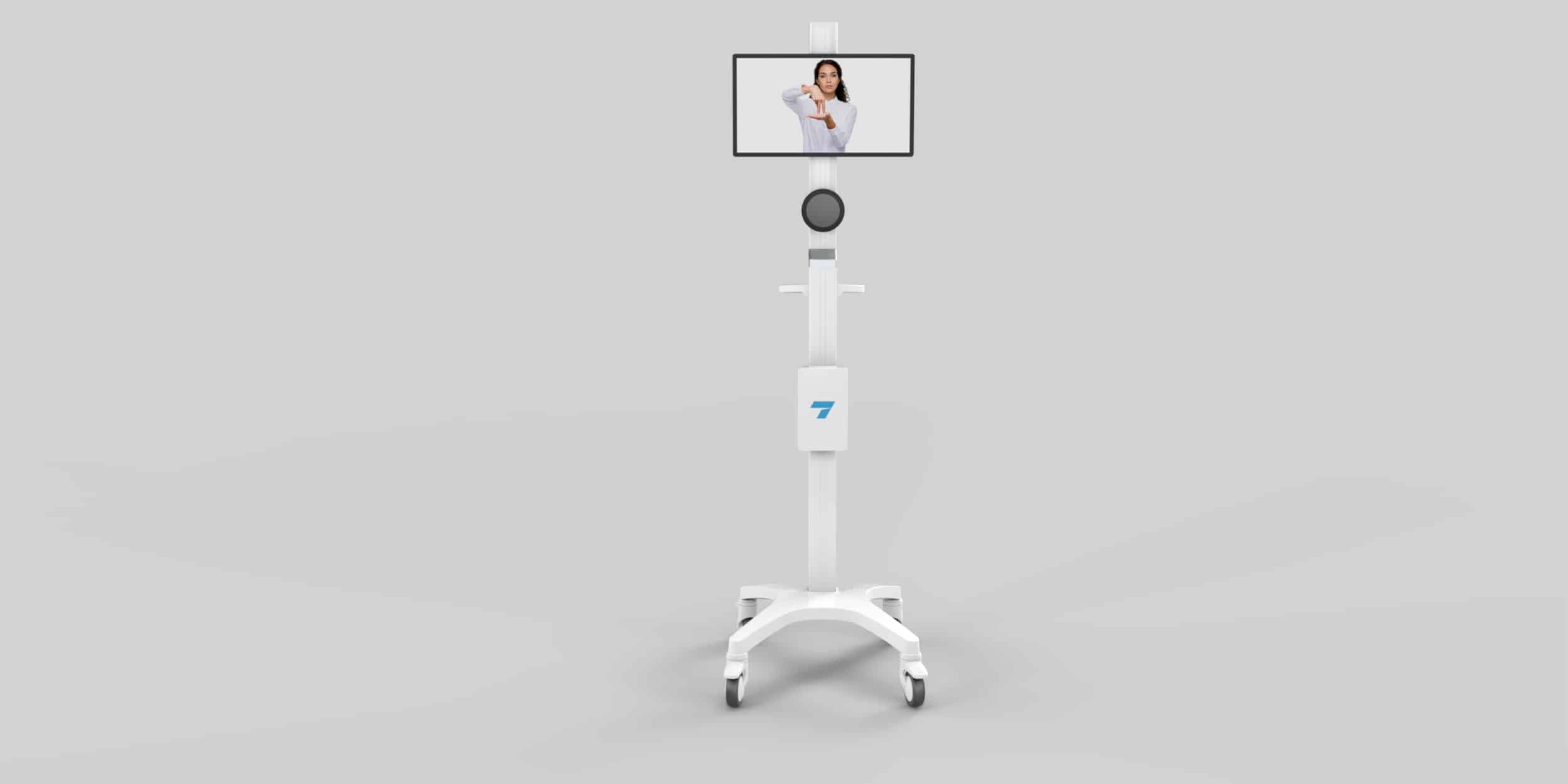
Hospitals traditionally relied on on-site interpreters to communicate with patients with hearing loss. However, video remote interpreting quickly became one of the fastest-growing language services in the healthcare sector.

Video remote interpreting (VRI) provides remote interpretation services for deaf and hard-of-hearing patients via videoconferencing technology, a high-speed internet connection, and equipment such as webcams or tablets.
Patients use videoconferencing technology to communicate with remote professional interpreters in American Sign Language (ASL), who then convey what they say to you in your preferred language. You can also verbally communicate with the interpreter, and they will communicate your comments and diagnosis to the patient.
According to federal civil rights laws, some covered entities may be required to provide ASL interpreting services for hard-of-hearing or deaf parents. For example, Section 1557 of the Affordable Care Act (ACA) states that hospitals and other healthcare providers must use the services of qualified medical interpreters to ensure the interpreter adheres to the Code of Ethics to interpret in healthcare settings and has a proper understanding of medical terminology.
So health practices need to include accessible options for patients with cognitive impairments such as hearing loss.
Video remote interpreting provides numerous benefits to you, your practice, and your patients. Four major benefits make VRI an excellent addition to healthcare practices:

Using video remote interpreting in hospitals and other healthcare facilities greatly improves patient-care team communication and removes the language barrier.
Video relay service (VRS) — communicating over the telephone — is one traditional interpreting method that fails to provide clear communication. Everyone can only rely on what they hear, which can cause a breakdown of communication.
According to language and communication experts, 55% of communication occurs through body language. So relying on sound isn’t enough.
The visual element of VRI enables clear, effective communication by facilitating non-verbal communication. Patients can see the interpreter’s facial expressions, and the interpreter can determine whether the patient understands what they are saying.
This way, VRI increases open communication and understanding between you and your hard-of-hearing patient. Your interactions will be much more personal, strengthening the patient-care team relationship.
Quick access to interpreters is one of the most appreciated benefits of VRI.
On-site interpreting often faces challenges with availability, especially regarding qualified medical interpreters. Distance also becomes a barrier since most interpreters have to travel long distances to provide on-site services. Many times, you have to contact the interpreter to schedule an appointment, then try to coordinate the patient’s appointment accordingly.
Video remote interpreting removes these barriers to patient care. Expert interpreters can deliver a personalized interpreting session without time constraints or geographic limitations. Many services offer 24/7 availability, so you can quickly access qualified off-site interpreters whenever you need to communicate with your deaf and hard-of-hearing patients.
Fast access is especially beneficial in emergencies when communication is absolutely essential. You can connect with a qualified medical interpreter within minutes whenever you urgently need medical interpreting.
Onsite interpretation is often much more expensive than video remote interpreting. Traditional on-site interpreting is charged per hour with a two-hour minimum charge. You often have to pay additional charges, such as travel fees and other expenses incurred.
VRI can help you reduce your interpretation budget. This video telecommunication service eliminates the need for auxiliary charges such as travel or appointment surcharges. You can tailor VRI services to your practice to fit your budget.
You can contract for services to only be available by appointment, so you only pay for them if you use them. If you have a large population of hearing-impaired patients, you can also contract with the language services company for 24/7, on-demand availability with no extra costs involved.
When you use video remote interpreting, healthcare becomes an enjoyable, engaging experience for patients.
Patient engagement increases when patients can communicate freely and fully understand their treatment plan. This is especially true for hearing-impaired patients who often rely on others to communicate with their care team and understand their diagnosis and treatment plan. Technology like VRI enhances the patient experience by making the process more streamlined and accessible.
Patients will appreciate your efforts to communicate. You will also be able to provide a higher quality of patient care as you come to fully understand your patient’s symptoms, concerns, and desires. VRI also allows for continuity of care, making it much easier for patients to connect with the same provider for their care.
When combined, these benefits increase patient satisfaction, resulting in improved patient outcomes.
Video remote interpreting software can be adapted to virtually any industry. However, it is best to invest in medical-grade video remote interpreting equipment.
Medical-grade VRI equipment — such as VRI carts — is made specifically to support clinical environments such as hospitals across the continuum of care.
VRI carts feature tablets or monitors with large screens that enable patients to see ASL interpreters from a comfortable distance, handheld devices to support mobile VRI, and a slim, wheeled design that makes moving between rooms and hospital floors fast and easy.

Communication isn’t only important with the patient. You must also communicate with your video interpreter clearly and effectively to ensure they know exactly what the appointment entails.
When you contact your language service company (LSC), you should give them all the appointment details, including:
You should also inform all parties if any part of the session will be confidential so they can agree on terms before the session. Send the appointment information to the interpreter beforehand and inform them of any changes promptly.
Integrating new technology into your practice can negatively affect your practice if you don’t train your staff to use and troubleshoot it.
When staff isn’t proficient with technology, it bogs down workflows and affects the patient experience. Your staff may spend more time focusing on the technology instead of the patient, leading to increased user error and employee and patient frustration. It can also lead to a breakdown of patient trust in the care team, negatively affecting the patient-care team relationship and patient satisfaction.
When you train your staff on how to use and troubleshoot video interpreting software, they can incorporate the technology into their workflow seamlessly. This leads to increased productivity, efficiency, and patient satisfaction.
Patients may be hesitant to accept video-mediated interpreting, especially if they haven’t seen it before or if they have their own interpretation methods. The process for remote interpreting and in-person interpreting differ, so explaining how the process works can ease patient hesitance and increase patient trust and acceptance.
It’s important to explain before the call and at the beginning of the call so that everyone understands their role.
Additionally, determine their communication preference in advance. Depending on the extent of their hearing loss, they may prefer to use ASL, type a reply and have the interpreter voice what they typed, or speak for themselves.
If they choose to speak or have the interpreter voice what they type, you should also emphasize the need to use clear language, speak in short sentences, and pause frequently to let the interpreter translate.
Now more than ever, it’s essential for healthcare practices to provide efficient, accessible interpreting services for deaf and hard-of-hearing patients. Video remote interpreting technology removes communication barriers between care teams and patients, leading to stronger provider-patient relationships, increased patient engagement and satisfaction, and improved clinical outcomes.
Furthermore, as patients continue to operate as consumers, they expect greater accessibility and convenient communication methods. Healthcare practices can stay ahead of the crowd by prioritizing clear, effective communication through video remote interpreting software.Are you interested in incorporating VRI into your practice? Tryten Technologies has the perfect solution for you. We provide a durable, lightweight, high-quality mobile VRI cart for your video interpreting needs. Check out our VRI cart today to see how you can make VRI a practical reality for your practice.